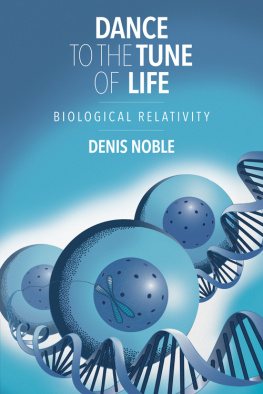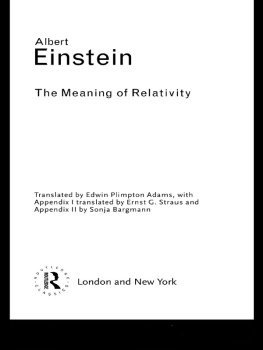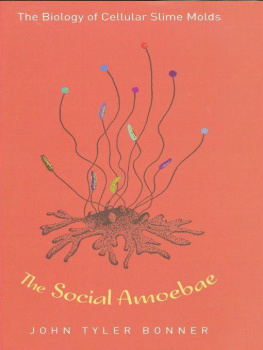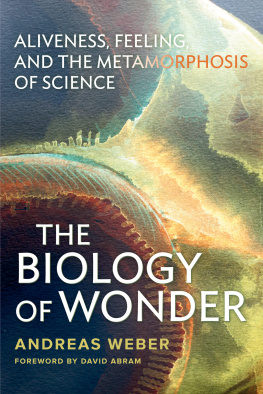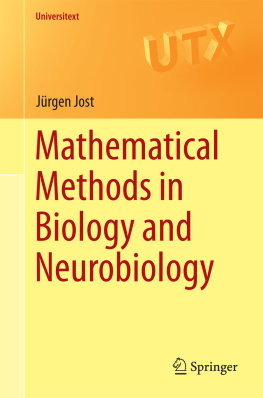In this thought-provoking book, Denis Noble formulates the theory of biological relativity, emphasising that living organisms operate at multiple levels of complexity and must therefore be analysed from a multi-scale, relativistic perspective. Noble explains that all biological processes operate by means of molecular, cellular and organismal networks. The interactive nature of these fundamental processes is at the core of biological relativity and, as such, challenges simplified molecular reductionism. Noble shows that such an integrative view emerges as the necessary consequence of the rigorous application of mathematics to biology. Drawing on his pioneering work in the mathematical physics of biology, he shows that what emerges is a deeply humane picture of the role of the organism in constraining its chemistry, including its genes, to serve the organism as a whole, especially in the interaction with its social environment. This humanistic, holistic approach challenges the common gene-centred view held by many in modern biology and culture.
Denis Noble is Emeritus Professor of Cardiovascular Physiology and Director of Computational Physiology at the University of Oxford, UK. He is the current President of the International Union of Physiological Sciences and a Fellow of the Royal Society.
University Printing House, Cambridge CB 2 8 BS , United Kingdom
One Liberty Plaza, 20th Floor, New York, NY 10006, USA
477 Williamstown Road, Port Melbourne, VIC 3207, Australia
4843/24, 2nd Floor, Ansari Road, Daryaganj, Delhi 110002, India
79 Anson Road, #0604/06, Singapore 079906
Cambridge University Press is part of the University of Cambridge.
It furthers the University's mission by disseminating knowledge in the pursuit of education, learning and research at the highest international levels of excellence.
www.cambridge.org
Information on this title: www.cambridge.org/9781107176249
Cambridge University Press 2017
This publication is in copyright. Subject to statutory exception and to the provisions of relevant collective licensing agreements, no reproduction of any part may take place without the written permission of Cambridge University Press.
First published 2017
Printed in the United Kingdom by TJ International Ltd. Padstow Cornwall
A catalogue record for this publication is available from the British Library
Library of Congress Cataloguing in Publication data
Names: Noble, Denis, 1936 author.
Title: Dance to the tune of life : biological relativity / Denis Noble.
Description: Cambridge ; New York : Cambridge University Press, [2017] | Includes bibliographical references.
Identifiers: LCCN 2016023673 | ISBN 9781107176249 (hardback)
Subjects: LCSH: Life Origin. | Relativity. | Cosmology. | Evolution (Biology) | MESH : Biological Evolution | Biodiversity | Genetic Variation | Origin of Life
Classification: LCC QH 325. N 625 2017 | NLM QH 366.2 | DDC 577 dc23
LC record available at https://lccn.loc.gov/2016023673
ISBN 978-1-107-17624-9 Hardback
Cambridge University Press has no responsibility for the persistence or accuracy of URL s for external or third-party internet websites referred to in this publication, and does not guarantee that any content on such websites is, or will remain, accurate or appropriate.
Preface
The central message of this book is that living organisms are open systems. That refers to all parts of organisms. All the molecules, organs and systems dance to the tune of the organism and its social context. Those molecules include the sequences of DNA we now call genes.
How do all these components of life dance together in harmony?
When did their billion-year dance begin?
What makes them dance?
Why is their dance relativistic?
What do we mean by a gene?
What do we mean by life?
How can life depend on dead molecules?
And what is Biological Relativity?
The answers to these questions form the subject of this book. We will also address the question of meaning. Could all this really happen as a consequence of blind chance? And what could that commonly used phrase possibly mean? What, indeed, do we mean by meaning? Could meaning itself be subject to a relativity principle: a relativity of epistemology?
If these questions fascinate you, then read on.
You will not need to know a lot of science to understand the book: what you will need is a new set of eyes. I will encourage the reader to adopt the eyes and mind of an inquisitive explorer. The scientific knowledge you need to know will mostly be in the book. If you already know a lot of science, you may need to relearn what you thought you knew. Because the central message is that twentieth-century biology went up the wrong street in the interpretation and presentation of its many impressive discoveries.
The reason is that some very influential twentieth-century biologists presented a simplistic gene-centred view of biology using memorable metaphors and brilliant writing to encourage you to adopt their view. And in this they were very successful. Hardly any biological discovery today is presented in the popular media without reference to the discovery of this or that gene for something or other.
This book will show you that there are no genes for anything. Living organisms have functions which use genes to make the molecules they need. Genes are used. They are not active causes.
This book will show you that there is no complete programme in our DNA. Programmes, if useful at all as a concept in biology, are distributed across scales in the organism.
This book will show you that there is no privileged level of causation, which is a central statement of the theory of Biological Relativity.
It will also show you that we are now far from certain what a gene is, and that many of the confusions and misrepresentations of biology arise from mixing up different definitions of genes and genetics.
We don't know when DNA first evolved. But it is virtually certain that it already existed two billion years ago. It seems likely that it must have existed for at least a billion years before that. There are fossils of the simplest cells that go back to over three billion years ago. So, if genes dance, then they have been doing so for billions of years, in fact for most of the period of the Earth's existence, which is about 4.5 billion years.
For the Fainthearted
In spite of the sub-title of this book, don't be afraid if you are not mathematically trained. I promise you that, with the sole exception of Einstein's iconic equation e = mc 2, there are absolutely no equations in the main body of the book. Science could not function properly without mathematics. But, even in the most mathematical areas of science, and biology is rapidly becoming one of those, it is usually possible to explain the concepts in common language, once they have been distilled down from the abstract world of equations.
To help you through some uncharted territory, like the Bellman in Lewis Carroll's nonsense poem The Hunting of the Snark , remember that what I tell you three times is true. I have deliberately included a certain amount of repetition in the different chapters, usually by expressing the same concept from a different angle or in a different context. Don't be alarmed if you think you have read something before. I turn some basic ideas in biology upside down. That takes a certain amount of getting used to. As you read on you may come to welcome those nice reminders of a point that is already half-appreciated. We are all used to this phenomenon in other ways. When we first see an unfamiliar object we easily mistake it for something else, and have to look again. That is even more true for unfamiliar concepts.

